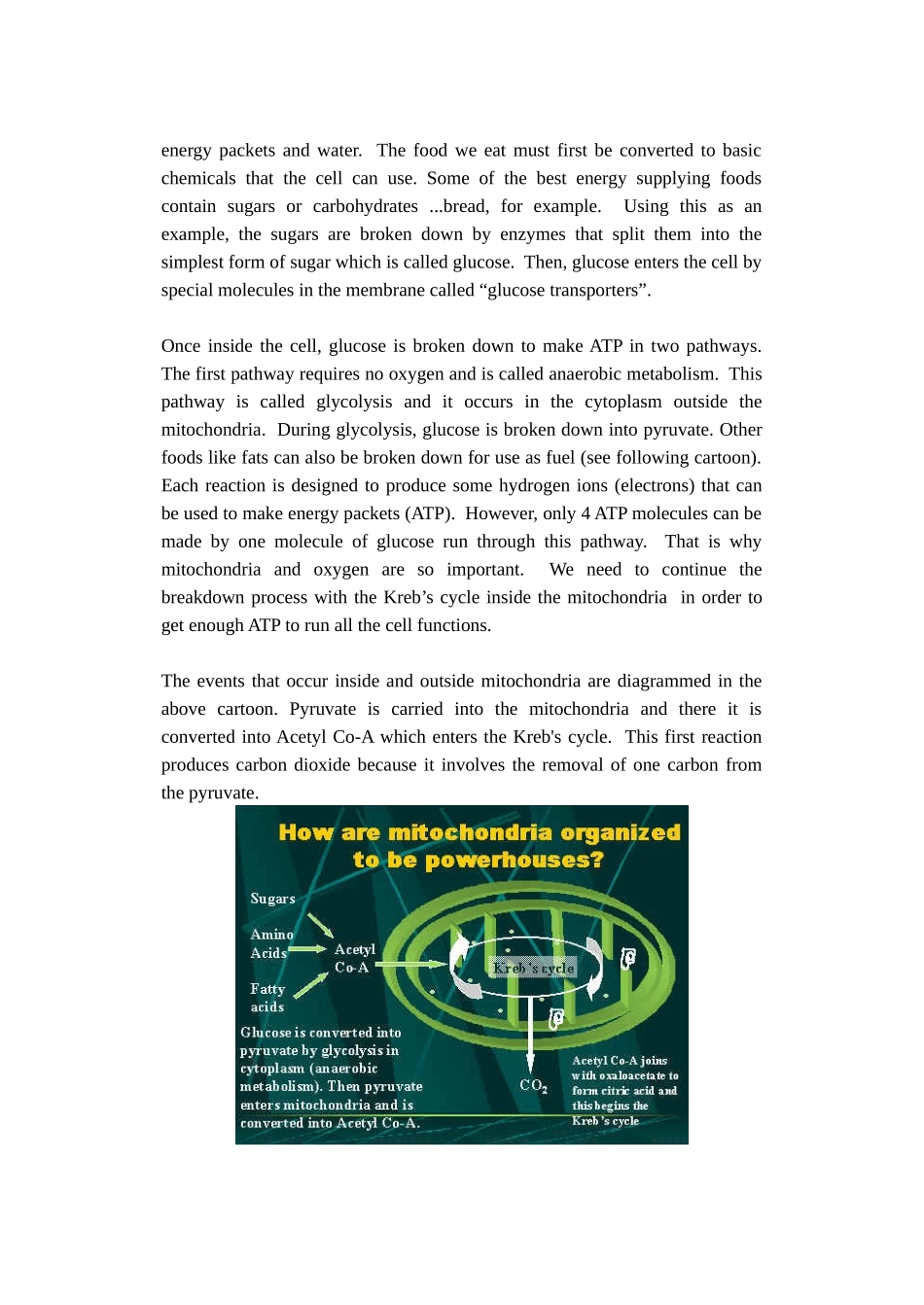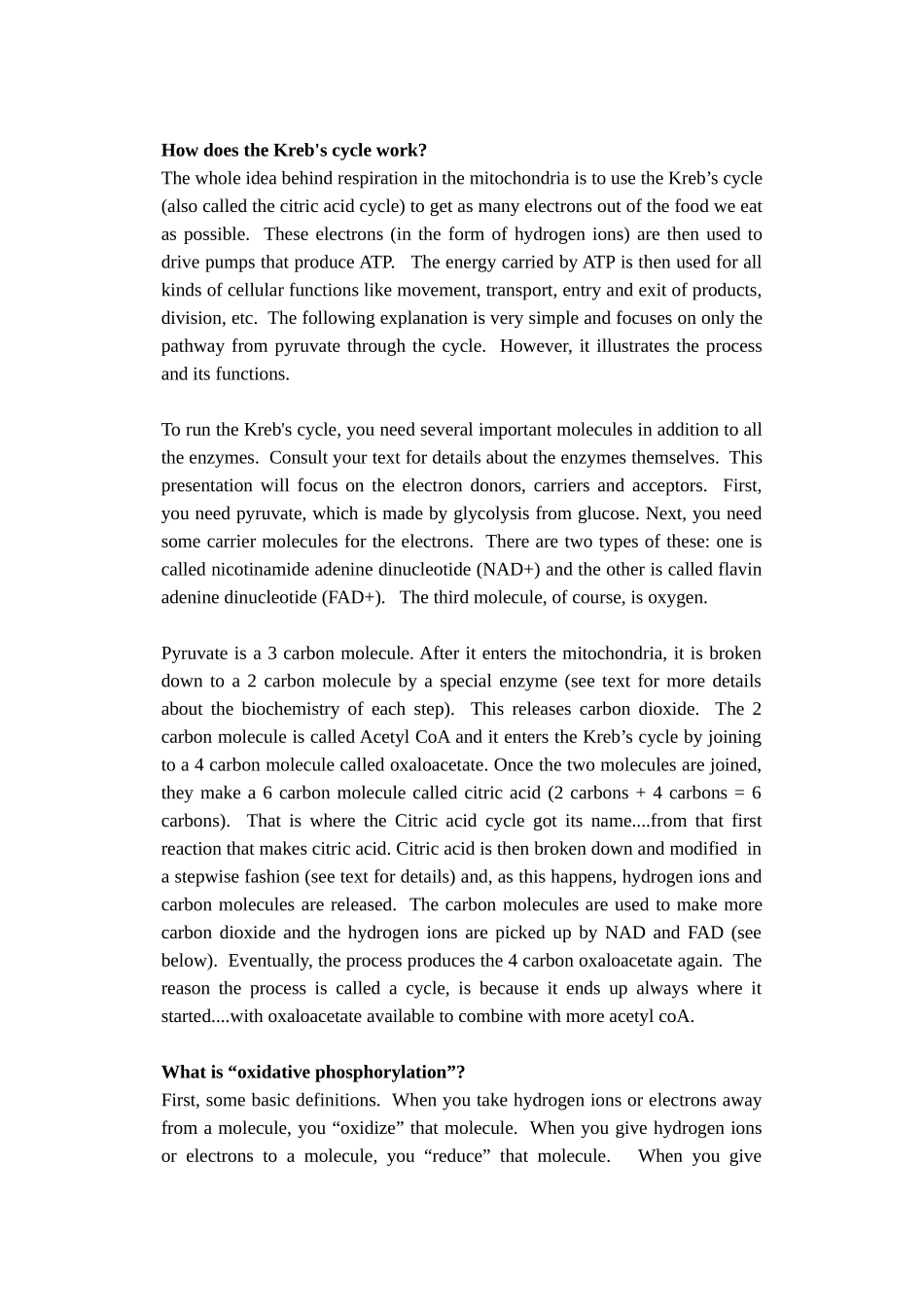细胞生物学双语教案 3(线粒体结构与功能) Mitochondrial SubstructureMitochondria contain two membranes, separated by a space. Both are the typical "unit membrane" (railroad track) in structure. Inside the space enclosed by the inner membrane is the matrix. This appears moderately dense and one may find strands of DNA, ribosomes, or small granules in the matrix. The mitochondria are able to code for part of their proteins with these molecular tools. The above cartoon shows the diagram of the mitochondrial membranes and the enclosed compartments. How are mitochondria organized to be powerhouses?The food we eat is oxidized to produce high-energy electrons that are converted to stored energy. This energy is stored in high energy phosphate bonds in a molecule called adenosine triphosphate, or ATP. ATP is converted from adenosine diphosphate by adding the phosphate group with the high-energy bond. Various reactions in the cell can either use energy (whereby the ATP is converted back to ADP, releasing the high energy bond) or produce it (whereby the ATP is produced from ADP).Steps from glycolysis to the electron transport chain. Why are mitochondria important?Lets break down each of the steps so you can see how food turns into ATP energy packets and water. The food we eat must first be converted to basic chemicals that the cell can use. Some of the best energy supplying foods contain sugars or carbohydrates ...bread, for example. Using this as an example, the sugars are broken down by enzymes that split them into the simplest form of sugar which is called glucose. Then, glucose enters the cell by special molecules in the membrane called “glucose transporters”. Once inside the cell, glucose is broken dow...


